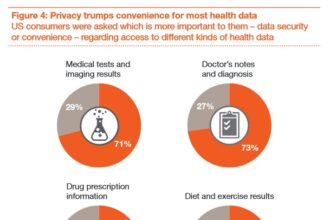I.) A Brief History
I.) A Brief History
The history of midwifery in the United States, until the early twentieth century, was relatively uncomplicated: women helped each other give birth, and there was a general, unspoken consensus that births took place at home. However, with the birth and development of American obstetrics, beginning in 1910, childbirth began to be professionalized and medicalized. In other words, medicine and doctors took precedence over midwives and natural childbirth. Moreover, there was a deliberate attempt to discredit midwifery as a profession—due, in large part, to the birth of the modern medical healthcare industry.
Fast forward to 2016, when we are experiencing a relative resurgence of home birth popularity, due in part to the modern prevalence of Cesarian sections: approximately one third of all births in the U.S. are C-sections, “a number far higher than the World Health Organization-recommended target of 10 to 15 percent. The inflated rate is due in part to longstanding misperceptions in the U.S. medical community about how quickly labor should progress and when medical intervention is necessary.” This is because the hospital-based, obstetrician-directed model is highly monitored and bed-ridden, seeing intervention as a common and even necessary part of childbirth, whereas the midwifery model of care regards childbirth as a normal process, which for most women and babies happens safely with minimal intervention.
II.) Politics & Legislation
I have a friend, Samantha, who has been a practicing doula for more than ten years. She recently provided an example of just one common practice that is largely harmful to the natural birthing process: that is, the model of the mother lying flat on her back—which a resident OB called “the dead beetle.” Apparently, this position is terribly unconducive to the natural birthing process, since it narrows the birth canal, making the necessity of a Cesarean much more likely than if the mother were squatting or on her hands and knees. Moreover, there is the obvious bad taste of the term ‘dead beetle,’ which compares a birthing woman to a dead insect—this is “unflattering at best, and revolting at worst,” as Sam put it. This observation alone was quite illuminating for me, as it revealed the enormous biases and misinformation about what is considered ‘normal’ to many people in their conceptions of childbirth.
The heated and widely-varied responses to a recent New York Times op-ed piece about the pros and cons of home births may lend a sense of the contentious nature of much of what we think we know and understand about natural childbirth and midwifery. Basically, the op-ed piece pointed out findings from a recent study based in Oregon that found that “the risk of a baby dying was 3.9 per 1,000 births for deliveries at home or in birth centers, versus 1.8 deaths per 1,000 births in hospitals.”
However, as one NY Times reader pointed out in a letter, the following week, Oregon is one of only two states that allows for unlicensed midwives to perform home births. Another pair of readers asked why the discrepancy between U.S.-based studies and studies based in other developed nations where home births and midwives are more regularly utilized. They also pointed out that in countries such as the Netherlands, England, and Canada, “home birth is integrated into the maternity care system, allowing [home-to-hospital] transfers to be handled far more smoothly than in the United States, where the integration of home birth transfers is the rare exception rather than the rule.”
Lastly, another reader mentioned the vast difference in cost between a home birth and an uncomplicated hospital delivery. One becomes tempted to conclude rather cynically, after all these observations, that the attempt to discredit midwives and home births stems largely from unfounded assumptions, fearmongering, and greed. After all, why else would obstetricians discourage home births, if not for the difference in insurance coverage and healthcare systems? According to Jason Hickel in a recent op-ed piece on Open Democracy, Britain’s National Health Service is “as good as it gets”: “What a refreshing change from the perverse incentives built into the American model, which not only lacks this motive but operates according to the opposite logic: the more bad health there is in the population, the more money there is to be made from it.”
Not too long ago, according to another study published in 2014 by Britain’s national health service, it was safer for healthy women to have their babies at home, or in a birth center, than in a hospital. One very notable difference is Britain’s public health system, which has integrated hospital births with birthing centers and home-based births. In the U.S., doctors “worry about losing patients to midwives.” However, “There are no financial incentives in the U.K. for doctors to deliver in a particular setting because there is no personal gain.”
Licensure requirements—as well as projected nursing shortages—do vary by state. Typically, midwives start out as registered nurses (RNs), and then proceed to obtain certification as a certified nurse-midwife (CNM) or certified midwife (CM) from the Midwifery Certification Board. Moreover, there is a 29% projected growth in the need for certified midwives from 2012 to 2022, with the salary ranging from approximately $62,480 to $119,690. Certified midwives, as advanced practice nurses (APRNs), have struggled historically to become integrated into third-party payers’ reimbursement plans. It was not until the passing and implementation of the Affordable Care Act that certified nurse-midwives (CNMs) achieved equitable reimbursement for their services under Medicare.
We’ve entered a new era of healthcare legislation and modern attitudes about midwives that are shifting in favor toward autonomous ideas of mothers and childbirth that are more in line with traditional midwifery practices. Now the U.S. needs to catch up with the rest of the world, in terms of enabling maternity and paternity leave and integration of hospital and home-based care, and we’ll be caught up with the rest of the civilized world.
Image Source: Sandor Weisz, https://www.flickr.com/photos/santheo/365560193







